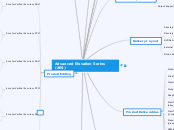Advanced Elevation Series (AES)
Products Offered
2m Vertical
4m Vertical
8m Vertical
Product Accuracy & Resolution
2m Vertical
Abs Hor CE60 - 3m
Rel Hor CE90 - 2m
Abs Vert LE90 - 2m
Rel Vert LE90 - 1m
2m Resolution
4m Vertical
4m Resolution
2m Resolution
Rel Vert LE90 - 2m
Abs Vert LE90 - 4m
Rel Hor CE90 - 4m
Abs Hor CE60 - 5m
8m Vertical
8m Resolution
4m Resolution
2m Resolution
Abs Vert LE90 - 8m
Rel Hor CE90 - 8m
Abs Hor CE60 - 10m
Rel Vert LE90 - 5m
Optional/Custom Products
Contour Product
1m Resolution
Shaded Relief Product
Elevation Models
Digital Surface Model (DSM)
Digital Terrain Model (DTM)
Product Requirements
Input Supported Products and Levels
Level 1B
Level 1B Stereo
Output Supported Products and Levels
8m, 4m or 2m Vertical Accuracy
DSM or DTM
GeoTIFF 32 bit signed floating point
DSM or DTM with Shaded Relief
GeoTIFF 8 bit unsigned integer
DTM Contours
Shapefile – any ESRI line file format
Delivery Layout
Directory Names
Directory Layout
DVD Delivery
External Hard Drive Delivery
Online Delivery
Product Deliverables
Product Consistency
Minimum Order Size
Maximum Order Size
Product Filenames
Shapefiles for all Sensors
Manifest FTP Metadata Files
(above top level directory)
Manifest FTP Metadata Files
(in top level directory)
Product Metadata Files
(product level directory)
DSM and DTM File Format
Shaded Relief File Format
Contour File Format
Projection and Horizontal Datum
Vertical Datum
Order Delivery Times
0-1,000 sqkm
8m & 4m Vertical Accuracy
30 Days
2m Vertical Accuracy
45 Days
1,000-10,000 sqkm
8m, 4m and 2m Vertical Accuracy
90 Days
Greater than 10,000 sqkm
8m, 4m and 2m Vertical Accuracy
Custom Quote
Product Quality
Edge Mapping
Spikes, Wells, Blunders
Null Values
Coastal Areas
Hydro Enforcement
Road Flattening (DSM only)
Cloud Areas
Obscured Areas
Tiled Areas
Product Editing
8 meter Vertical Accuracy DSM
Required Editing
• Edge matching
• Remove spikes, wells, and blunders
• Fill null values with -32767
• Flatten coastal areas
• Cloud Shapefile
• Obscured Shapefile
Optional Editing
• Hydro enforcement
• Flatten roads
8 meter Vertical Accuracy DTM
Required Editing
• Edge matching
• Remove spikes, wells, and blunders
• Fill null values with -32767
• Flatten coastal areas
• Cloud Shapefile
• Obscured Shapefile
Optional Editing
• Hydro enforcement
4 meter Vertical Accuracy DSM
Required Editing
• Edge matching
• Remove spikes, wells, and blunders
• Fill null values with -32767
• Flatten coastal areas
• Cloud Shapefile
• Obscured Shapefile
Optional Editing
• Hydro enforcement
• Flatten roads
4 meter Vertical Accuracy DTM
Required Editing
• Edge matching
• Remove spikes, wells, and blunders
• Fill null values with -32767
• Flatten coastal areas
• Cloud Shapefile
Optional Editing
• Hydro enforcement
2 meter Vertical Accuracy DSM
Optional Editing
• Hydro enforcement
• Flatten roads
Required Editing
• Edge matching
• Remove spikes, wells, and blunders
• Fill null values with -32767
• Flatten coastal areas
• Cloud Shapefile
• Obscured Shapefile
2 meter Vertical Accuracy DTM
Optional Editing
• Hydro enforcement
Required Editing
• Edge matching
• Remove spikes, wells, and blunders
• Fill null values with -32767
• Flatten coastal areas
• Cloud Shapefile
• Obscured Shapefile
Contour Intervals
DTMs, DSMs & Contours
Contour Spacing
Index & Intermediate Contours
Elevation Numbering
Recommendations for displaying Contours
